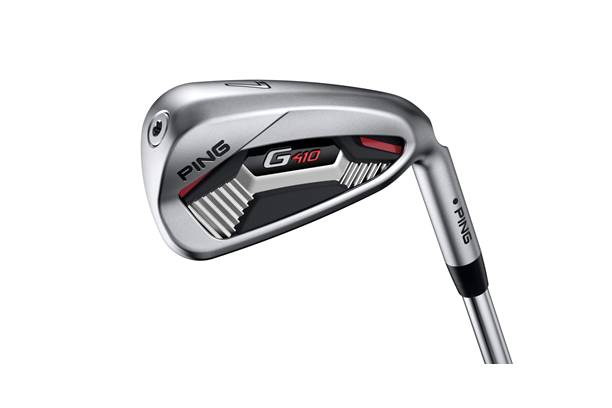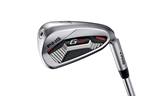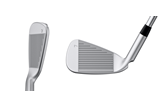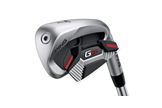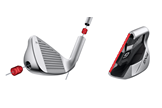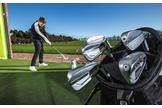Ping G410 iron Review
Last updated:
-
At a glance
- TG Rating
- Owner Rating
What we say...
Ping’s new G410 irons are a high-performance game-improvement iron in a compact design
The G410 is the 10th incarnation of the Ping G iron model but are a marked departure from the original G blueprint that was developed two decades ago. Ping’s engineers have specifically targeted a sleeker design with the G410, and while there’s a a shorter blade length, less offset and a super clean – lean look, incredibly there’s 8% more forgiveness than the G400 (Ping’s previous model).
Reviewed and tested: Ping G425 irons
Ping say the new G410’s blade length is 3% smaller with 10% less hosel offset than the previous model. There’s an undercut top-rail to remove mass, improve face flex and increase ‘hinging” which along with a very thin leading edge transition helps launch shots faster and higher.
For us, the biggest change from the previous G400 is the removal of the ‘custom tuning port’ (which has been a feature of every G iron) from the irons cavity. The purpose was to give Ping the ability to custom weight irons for any setup or golfer, but by removing it from the cavity Ping can encourage more face flex, but brilliantly clever thinking repositions the weight port to the toe (in the form of a fixed weight screw) and inside the hosel, raising MOI by 8%.
TESTED: Which Ping iron suits me?
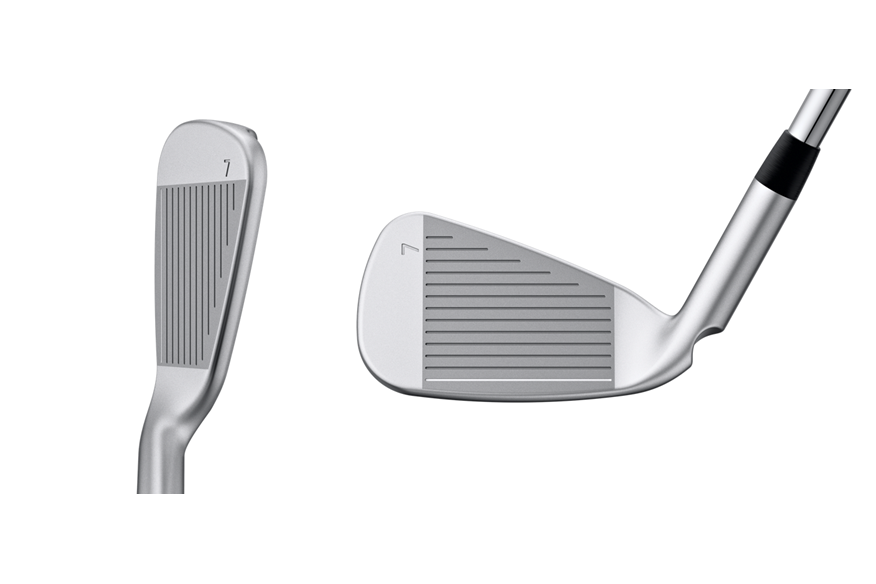
The G410 iron is designed to sit right in the middle between the hollow body i500s and G700s but it doesn’t have a hollow body itself. Ping say it would have been hard to match the G410s MOI performance with a hollow body design.
“In the G410 iron, our engineers challenged the idea that you can’t make an iron smaller and increase the forgiveness at the same time,” said John K. Solheim, Ping President.
IRONS RANKED BY FORGIVENESS: 54 sets tested
WATCH: BEST 2020 GAME IMPROVER IRON VIDEO
Ping G410 Iron: TG Verdict
You won’t often hear golf brands say they’ve improved forgiveness by making an iron or wood smaller, as reduced head size usually means a lower MOI. But Ping’s hierarchy insisted the new G410 had to be a sleeker, slimmed down model than any of the nine previous G irons.
The G410 has a shorter blade length and 10% less hosel o set, which positions the G iron, looks wise at least, closer to a players’ iron than ever before. Yet magically, because the custom tuning port’s moved to the toe, forgiveness is increased by 8%.
The G410 is a great option for club golfers; it’s a real looker, too, which hasn’t always been Ping’s strength over the years. Our data suggests there’s more powerful options out there, but you’ll need to compromise on head shape or size to get them. We reckon they’ll suit golfers from about an eight handicap upwards.
RELATED: Ping G425 iron review
Watch: How it works – Ping G410 iron
“They’ve developed a clean, highly appealing design with less offset and a significantly higher MOI when compared to the G400 iron. It’s the most forgiving iron of its size. It will appeal to a very wide range of golfers as it produces faster ball speeds, maximum forgiveness and amazing feel with a pleasing appearance – all the attributes they need to hit their iron shots higher, further and straighter.”
TESTED: Forged irons ranked by forgiveness
G410 Irons: Key Features
Re-shaping Distance and Forgiveness
Ping’s engineering team created a face and cavity structure in the G410 iron that delivers faster ball speeds and saves weight to expand the perimeter weighting. The additional weight savings are concentrated in the toe and hosel to achieve an 8% increase in the moment of inertia (MOI) for more forgiveness and consistency.
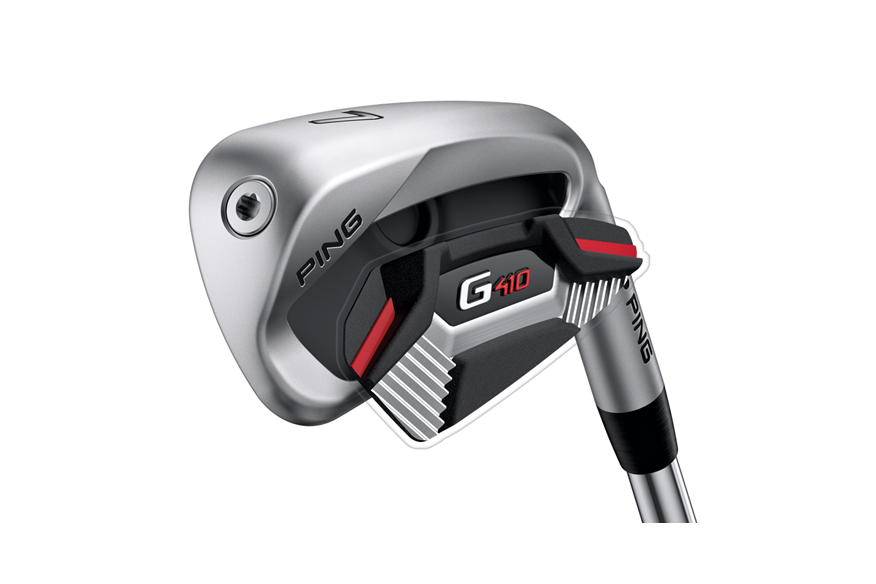
The more flexible, free-moving face amplifies ball speeds for greater distance and higher max height, allowing golfers to hit less club into the green with the control and precision to hold the putting surface. This is achieved by de-coupling the weighting structure from the face to create a larger flexing zone, which performs like a hinge to launch the ball faster and higher with consistency and predictability. The next generation of COR-Eye technology powers the performance in conjunction with the cascading sole design and deep top-rail undercut.
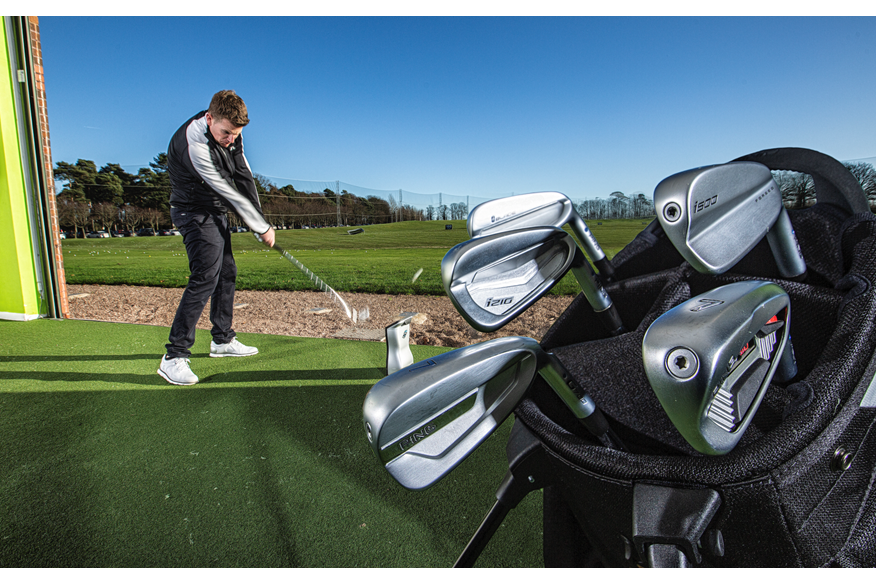
“The G410 iron represents several exciting iron design advancements for us,” said Solheim. “Our innovations like COR-Eye technology have allowed us to re-imagine the way we engineer an iron. By increasing ball speed as much as we have in recent models, our irons launch much easier and higher than ever. As a result, we can experiment with the size and shape of the head while improving the MOI properties so critical to consistent performance.”
How does G410 compare to Ping’s other 2019 irons?
High Marks for Look, Feel and Sound
The clean, refined shape of the G410 iron results from a slightly shorter blade length and 10% less offset compared to the G400 iron, creating an inspiring blade-iron-style look with broad appeal. Its resilient hydropearl 2.0 finish provides an attractive appearance and contributes to smooth turf interaction. The full-cavity, co-molded aluminum and elastomer badge delivers a powerful, reassuring feel and sound.
TESTED: The truth about strong lofted irons
“We all know the first impression of any club design is vitally important. It starts with the appearance at address and continues when the golfer solidly strikes that first shot,” said Solheim. “We’re seeing very positive results from our own data and hearing outstanding feedback from others about every aspect of the design and performance of the G410 iron.”
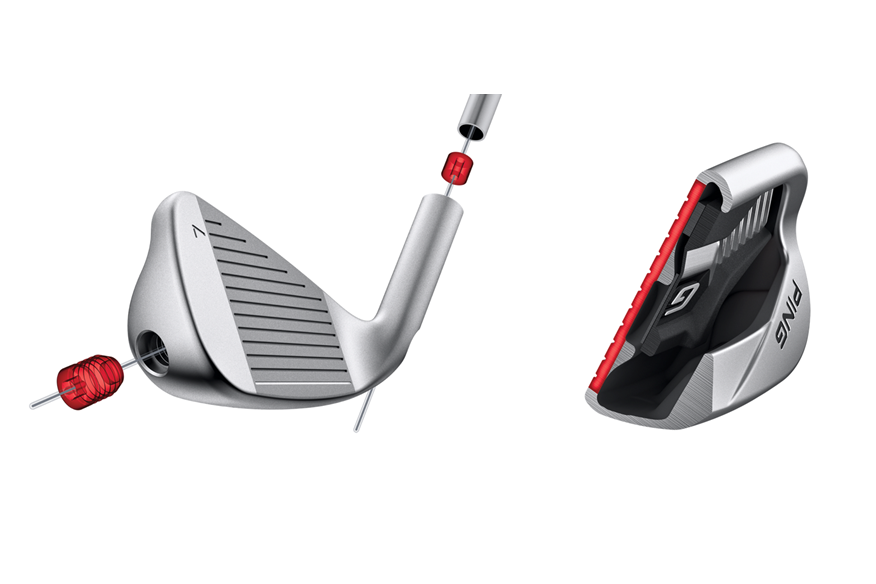
G410 Iron Specifications
Multi-material construction: Hyper 17-4 stainless steel head, tungsten toe/hosel weights, aluminum/elastomer badge, hydropearl 2.0 finish.
TESTED: Why all the fuss over hollow body irons?
G410: High-spin wedges
Using the same geometry as the Glide 2.0 wedge series, the grooves on the G410 PW, UW, SW and LW are precision machined with a sharper edge radius, increasing interaction with the cover of the ball at impact and creating more friction for improved spin and trajectory control.
“The fully machined grooves on all four wedges are an example of the added detail we’ve engineered into the G410 irons,” said Solheim. “For players who want a consistent look and feel throughout their set, they can now enjoy much higher spin and control in their scoring clubs along with all the other performance benefits of the iron’s technology.
Why we use a Foresight GC Quad launch monitor

Where does the Ping G410 iron fit in the range?
A clean and compact iron for golfers who demand a blade like appearance. iBlade was launched in 2016 which has lead to speculation the ‘blueprint’ iron which Ping pro’s have been spotted with recently may replace it at some point.
Thanks to strong lofts i500 is a powerful hollow body iron. The face is forged from the same material Ping use for their fairway woods and hybrids, it maximises ball speed. Launched in 2018.
A classic, compact better player iron with a cavity back for forgiveness. Popular with Ping tour pro’s because the traditional lofts mean you don’t need to rejig carry distances. Launched in 2018.
Ping G410
The iron that sits at the top of the bell curve, meaning Ping will sell more G410s than any other. Suited to a very wide audience of golfers anywhere from high single figures and above.
A hollow body super game improvement iron that uses a frame design to generate wood-like face flex. A wider sole, bigger head and more hosel offset maximise playability. Launched in 2018.
Product Information
- RRP: £126 (s) £136 (g) per iron
- Availability: 4 - PW, UW, SW, LW
- Stock shaft: Ping AWT 2.0 (s) Alta CB Red (g)
Upgrade shafts (at no extra cost):
True Temper Dynamic Gold / 105 / 120
Project X LZ
True Temper XP95
Nippon Pro Modus Tour 105
KBS Tour - 7-iron loft: 30°

